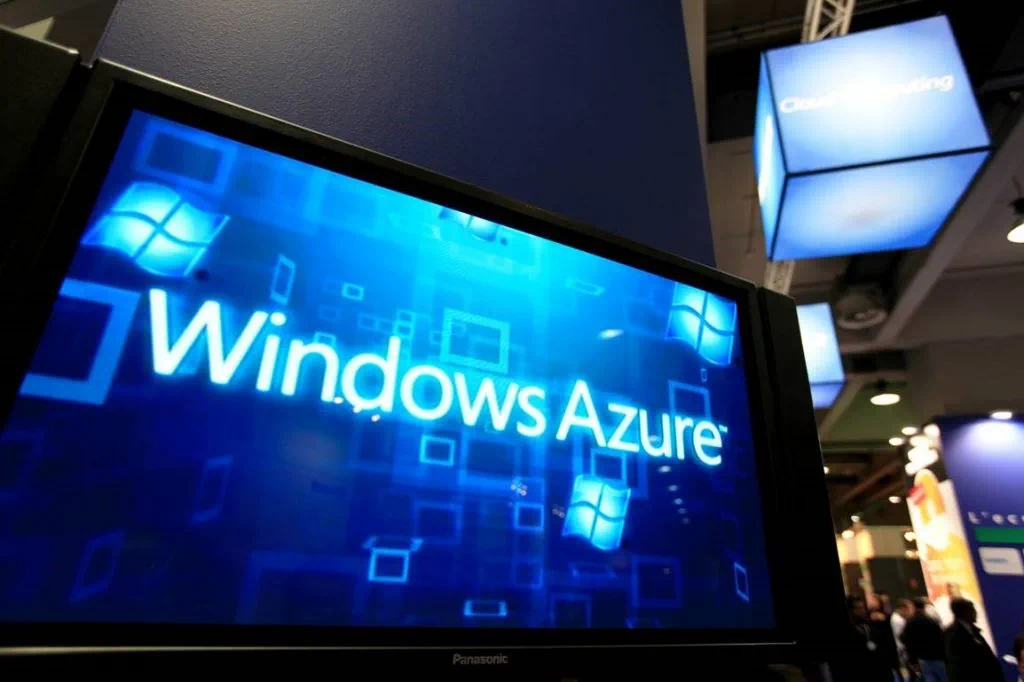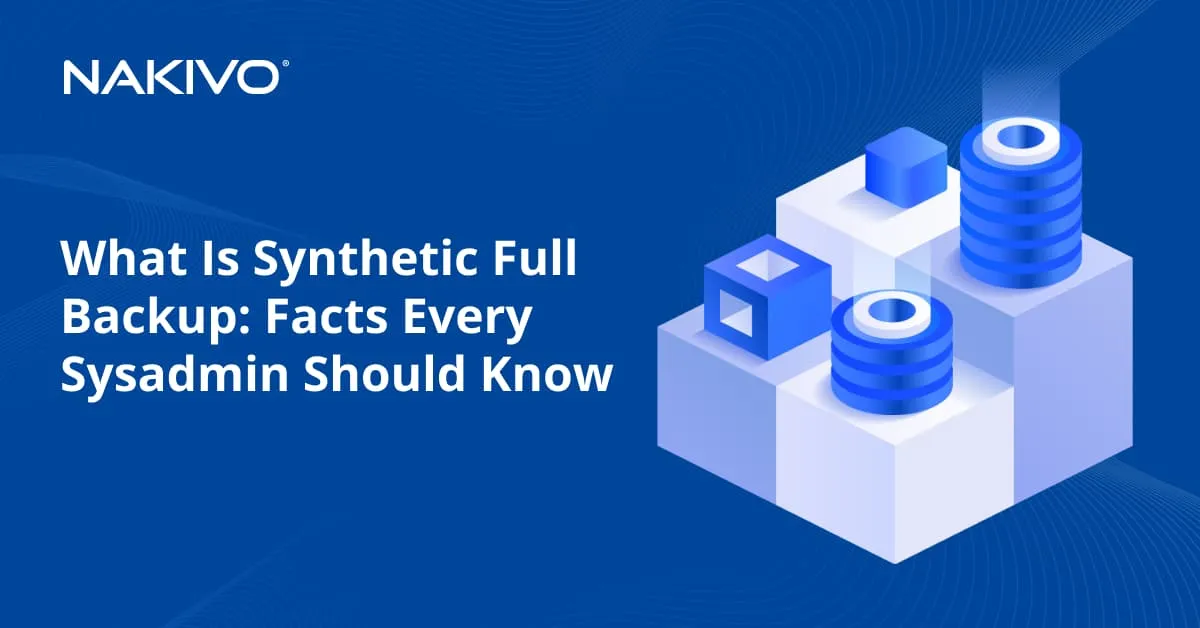Comprehensive Comparison of Microsoft Azure Instance Types
When looking at the statistics of the cloud infrastructure market, it becomes clear that Microsoft Azure has been strengthening its position. As of the first quarter of 2019, its market share was 16%, compared to 14% in 2018. Additionally, the service is growing fastest among public cloud providers, with a growth rate of approximately 72% in 2019. Microsoft Azure claims that the range of virtual machines (VMs) they offer suits basically all application purposes. The difference between Microsoft Azure instance types lies in such parameters as memory, storage, and compute capacity. To choose the right option, you have to assess the workloads in your infrastructure and properly define your business needs.
To ensure the utmost security of your data, consider integrating NAKIVO Backup & Replication with Microsoft Azure. Storing backups offsite is a wise practice, given that a local incident at your primary site might render both your production VMs and their backups unavailable. With the VM Backup to Cloud feature, you are protected from this scenario, which makes Azure Cloud the perfect option for an offsite backup repository.
Quick Overview of Microsoft Azure Instance Types for Windows and Linux
Azure VMs can be grouped according to the purposes they were designed for. They differ by CPU capacity, disk characteristics, and memory amount, providing enough solutions to handle any workload.
| Type | Sizes | Description |
| General purpose | B, Dsv3, Dv3, Dasv3, Dav3, DSv2, Dv2, Av2, DC |
|
| Compute optimized | Fsv2 |
|
| Memory optimized | Esv3, Ev3, Easv3, Eav3, Mv2, M, DSv2, Dv2 |
|
| Storage optimized | Lsv2 |
|
| GPU | NC, NCv2, NCv3, ND, NDv2 (Preview), NV, NVv3 |
|
| High-performance compute | HB, HC, H |
|
Microsoft Azure Instance Types in Detail
As mentioned above, Azure VMs are available in a wide variety of sizes. Choosing the right option is crucially important for effective workload management. Here is a short description of available Azure VMs sizes:
A-Series
Entry-level VMs
If your primary needs are development and testing, VMs of this type are the right choice for you. Designed for entry-level workloads, A-series VMs are a cost-effective solution for low-traffic web servers and small to medium databases. Apart from this, typical use cases include servers for proof-of-concepts and code repositories.
The Av2 Standard is the latest generation of A-series. Av2-series VMs come with a similar level of processor performance, but with faster disks and more memory per vCPU core. The amount of RAM has been increased from 1.75 GB to 2 GB. There are seven types of Av2-series VMs that can be deployed on a wide range of hardware types and processors.
Overall, A-series VMs are a good option to get acquainted with Azure.
Bs-Series
Economical burstable VMs
Economical burstable VMs are a solution for low to moderate workloads with occasional peaks in use. Put another way, Bs-series VMs can burst to deal with the increased workloads when necessary.
Together with A-series, Bs-series VMs make for the most budget-friendly option among all Microsoft Azure instance types. Simply for reference, prices start at just $4.86 per month.
Like in the case of A-series, Bs-series VMs are a good choice for development, testing, and low-traffic web operations. Also, their use cases include small databases and micro services, as well as servers for proof-of-concepts and build servers. The key difference is that B-series VMs are suitable for workloads with burstable performance requirements.
D-Series
General purpose VMs
VMs of this series are suitable for most production workloads. Designed to run enterprise-grade applications and relational databases, Dv2-series instances are based on the latest generation Intel Xeon 2.4 GHz (Haswell) or 2.3 GHz (Broadwell) processors. Moreover, with Intel Turbo Boost Technology 2.0, they can achieve 3.5 GHz. In the Dv3 Standard, memory has been expanded from approximately 3.5 GB to 4 GB per vCPU core.
Simply put, D-series VMs are great for applications that require higher memory capacity, better local disk performance, or a faster processor. As an example, they are good for in-memory caching and analytics. Last but not least, D-series VMs support Azure Premium SSDs.
DC-Series
Protection of data in use
This is a new family among Microsoft Azure instance types that is focused on confidential computing. The purpose of DC-Series VMs is to protect data and code samples in use, or in other words, while data is being processed in the public cloud.
This is possible through the use of secure enclaves. Such approach serves as an addition to the built-in functionality that enables encryption of data at rest and in transit.
DC-Series VMs allow for confidential querying in databases, creation of both scalable and confidential consortium networks, and development of secure multi-party algorithms for machine learning.
E-Series
Heavy memory usage
This is a series of VMs optimized for memory-intensive workloads. Designed to offer a high memory-to-CPU ratio, E-Series VMs are a perfect choice for relational database servers, medium to large caches, and in-memory analytics.
Ev3-series VMs are great for enterprise-grade applications that require significant memory resources, such as SAP HANA, SAP S/4 HANA, or SQL Hekaton. More precisely put, E-series VMs range from 16 to 432 GB of memory and 2 to 64 vCPUs, respectively.
Also, the E-series supports Azure Premium SSDs. As an example, the temp storage (SSD) of Easv3-series VMs ranges from 32 to 864 GB.
F-Series
Compute optimized VMs
Designed with a high CPU-to-memory ratio, F-series VMs are great for medium-traffic web servers, batch processing, and gaming.
They are based on the Intel Xeon 2.7 GHz processor. With Intel Turbo Boost Technology 2.0, the performance of vector processing workloads can be increased by nearly two times. Besides, compute optimized VMs feature Intel Hyper-Threading Technology that allows for a more efficient use of processor resources. As for the amount of RAM, F-series VMs range from 4 to 144 GB.
F-series VMs are good for network appliances, application servers, and other types of workloads with high computational requirements.
G-Series
Memory and storage optimized VMs
This is a solution for workloads with high memory and storage requirements. G-series VMs are among the Microsoft Azure instance types that feature the most memory, the highest processing performance, and the biggest SSD storage capacity. The amount of RAM ranges between 28 and 448 GB. Local SSD storage in Standard_G1 is 412 GB, while Standard_G5 offers as much as 6,596 GB of SSD space. Equipped with the Intel Xeon processor E5 v3 family, G-series features up to 32 vCPU cores.
Such characteristics make G-series VMs a perfect option for large SQL and NoSQL databases, SAP applications, and data warehousing.
H-Series
High-performance computing
VMs of H-series are a cost-effective solution that satisfies the demands of enterprise-level businesses. As the fastest and most powerful machines of all Microsoft Azure instance types, they are ideal for complex engineering and scientific workloads with significant resource requirements. A wide variety of use cases includes fluid dynamics, crash simulations, seismic exploration, weather modelling, heat transfer simulation, and so on.
H-series VMs feature 8 or 16 Intel Xeon E5 2667 v3 processor cores. The amount of RAM is between 7 and 14 GB per vCPU core. The HB Standard features 60 AMD EPYC 7551 processor cores, with the amount of RAM per core being 4 GB. In the HC Standard with 44 Intel Xeon Platinum 8168 processor cores, there are 8 GB of RAM per vCPU core. As for memory bandwidth, it is more than 260 GB/sec; the hyper-threading option is not available.
Overall, H-series VMs are optimized for applications requiring large amounts of memory (RAM) per vCPU core.
Ls-Series
Storage optimized VMs
Designed to offer substantial local disk storage capacity as well as high disk throughput and IO, Ls-series VMs are a great choice for Big Data, SQL, and NoSQL databases.
Lsv2 VMs run on the AMD EPYC 7551 processor with 8 cores in Standard_L8s_v2 and 80 cores in Standard_L80s_v2. The amount of memory ranges from 64 to 640 GB, respectively. The max processor boost is 3 GHz, and the option of multithreading is enabled.
Optimized for storage purposes, Ls-series VMs are ideal for infrastructures seeking low-latency and high throughput on large datasets. Use cases include data warehousing and large transactional databases, among them Cassandra, MongoDB, Cloudera, and Redis.
M-Series
Largest memory optimized VMs
For now, the M-series family are the largest memory optimized VMs among all the Microsoft Azure instance types.
The amount of memory in M-Series is as much as 3.8 TB, while Mv2-Series offers the largest memory capacity in the entire cloud – up to 5.7 TB. As for the processor characteristics, the VMs feature up to 128 and 208 cores respectively. The latter is the highest vCPU count in the cloud. These capacities allow users to substantially increase the performance of parallel processing.
The M-series family is a perfect option for memory-intensive workloads. Usage examples include SAP HANA, SAP S/4 HANA, SQL Hekaton, and other heavy in-memory applications that require massive parallel processing power.
N-Series
GPU optimized VMs
This family of VMs was designed for computing and graphics-intensive workloads, including graphic rendering and video editing. Also, this is the right solution for high-end remote visualization, deep learning inference, and predictive analytics.
N-series VMs are available with single or multiple GPUs. Overall, there are three different offerings designed for specific purposes:
- NC-series is optimized for resource-intensive computing tasks. Use cases include CUDA- and OpenCL-based workloads, artificial intelligence applications, and deep learning. NCv3-series run on NVIDIA’s Tesla V100 GPU and feature up to 448 GB of memory, which allows users to handle high-performance computing workloads in a more efficient way.
- ND-series is focused on purposes related to model training and deep learning. Powered by the Intel Xeon E5-2690 v4 (Broadwell) processor, ND-series VMs feature from 6 to 24 vCPUs and up to 448 GB of RAM.
- Backed by the NVIDIA Tesla M60 GPU, NV-series is a great option for remote visualization, encoding, streaming, gaming, and other graphics-intensive applications.
Concluding Thoughts
With NAKIVO Backup & Replication, Microsoft Azure Cloud can be used as an offsite destination for your backups. You can easily integrate NAKIVO Backup & Replication with Azure and rest assured that the backups of your VMs are safe and accessible. As mentioned above, our solution allows you to send copies of your VM backups to Azure Cloud, thus making sure your business-critical data is protected, even in the event of a disaster at your primary site.






